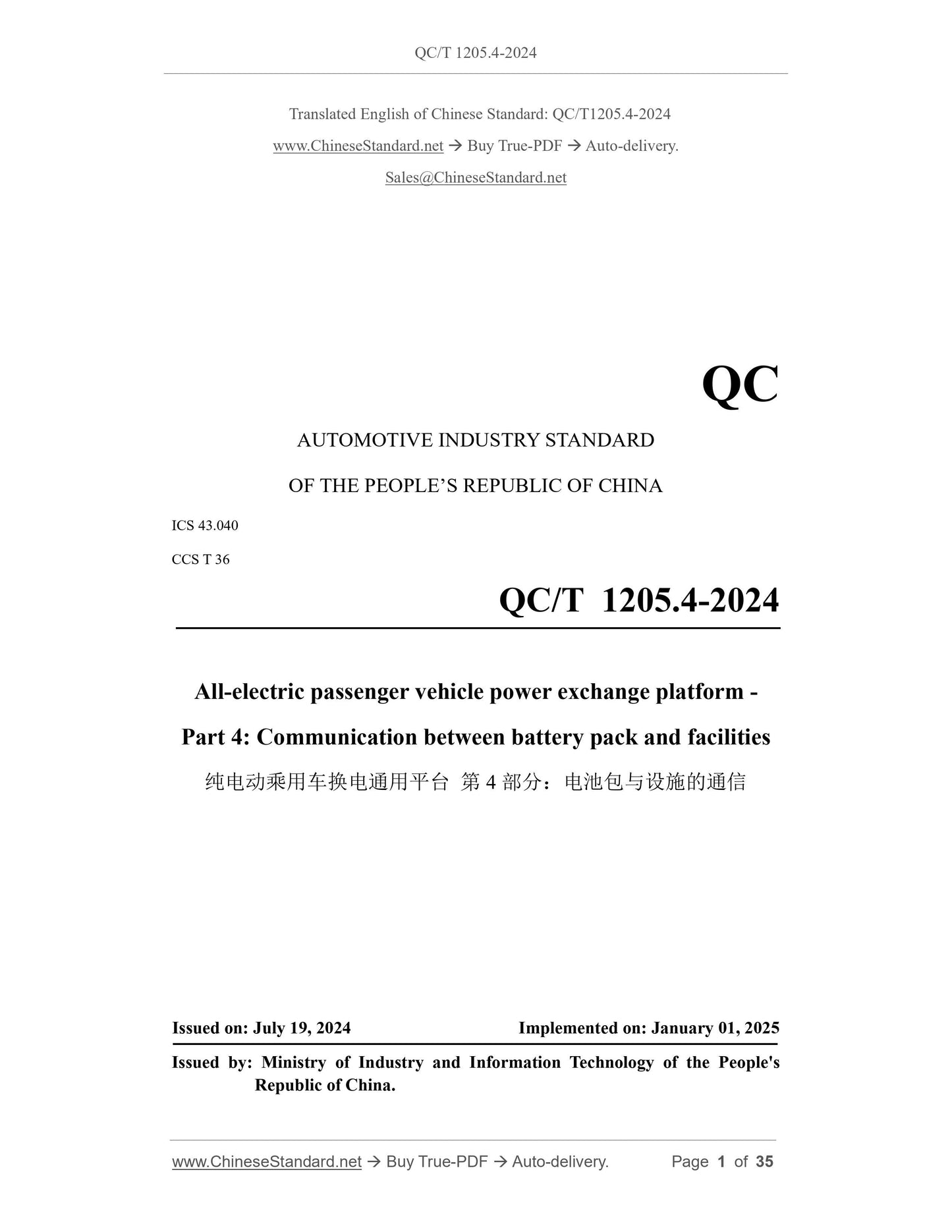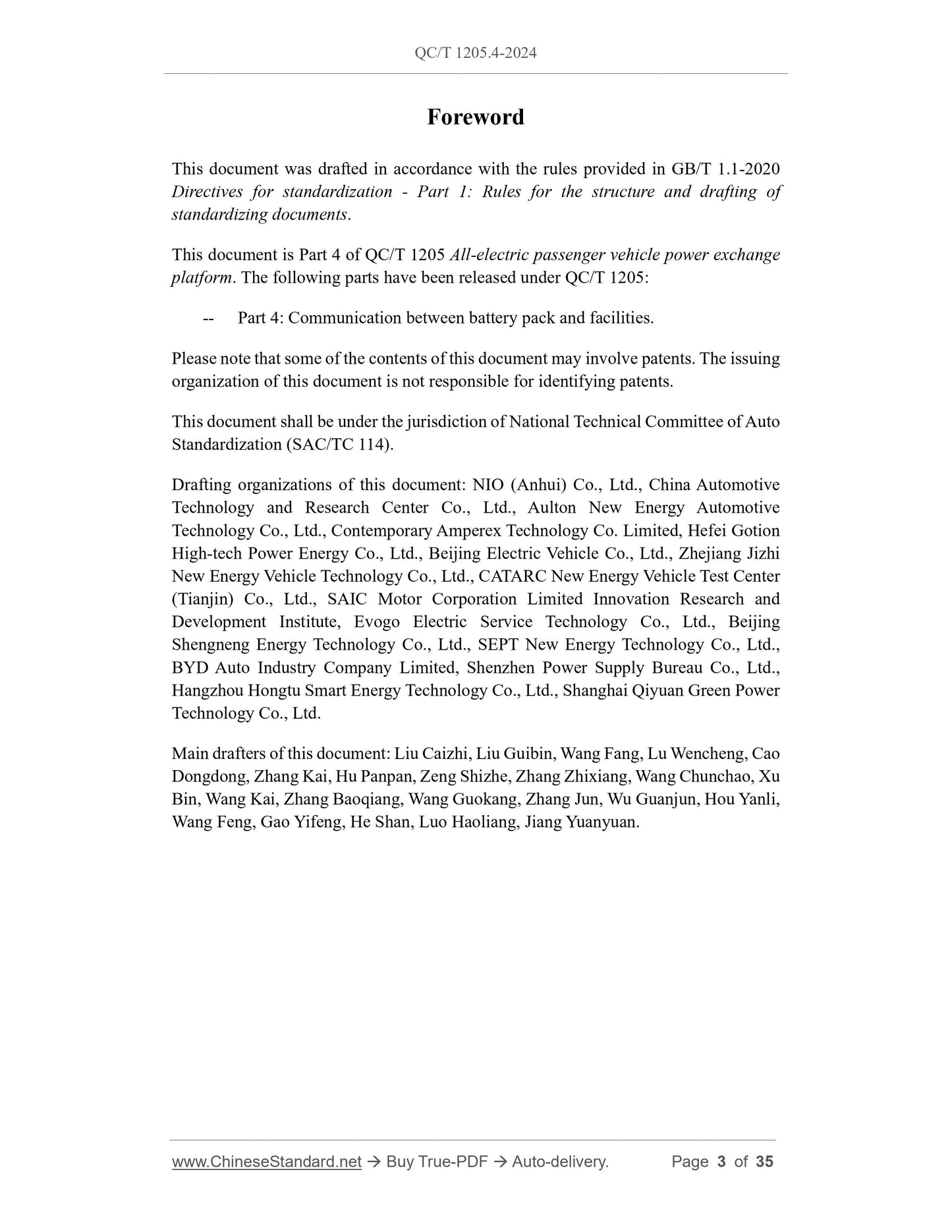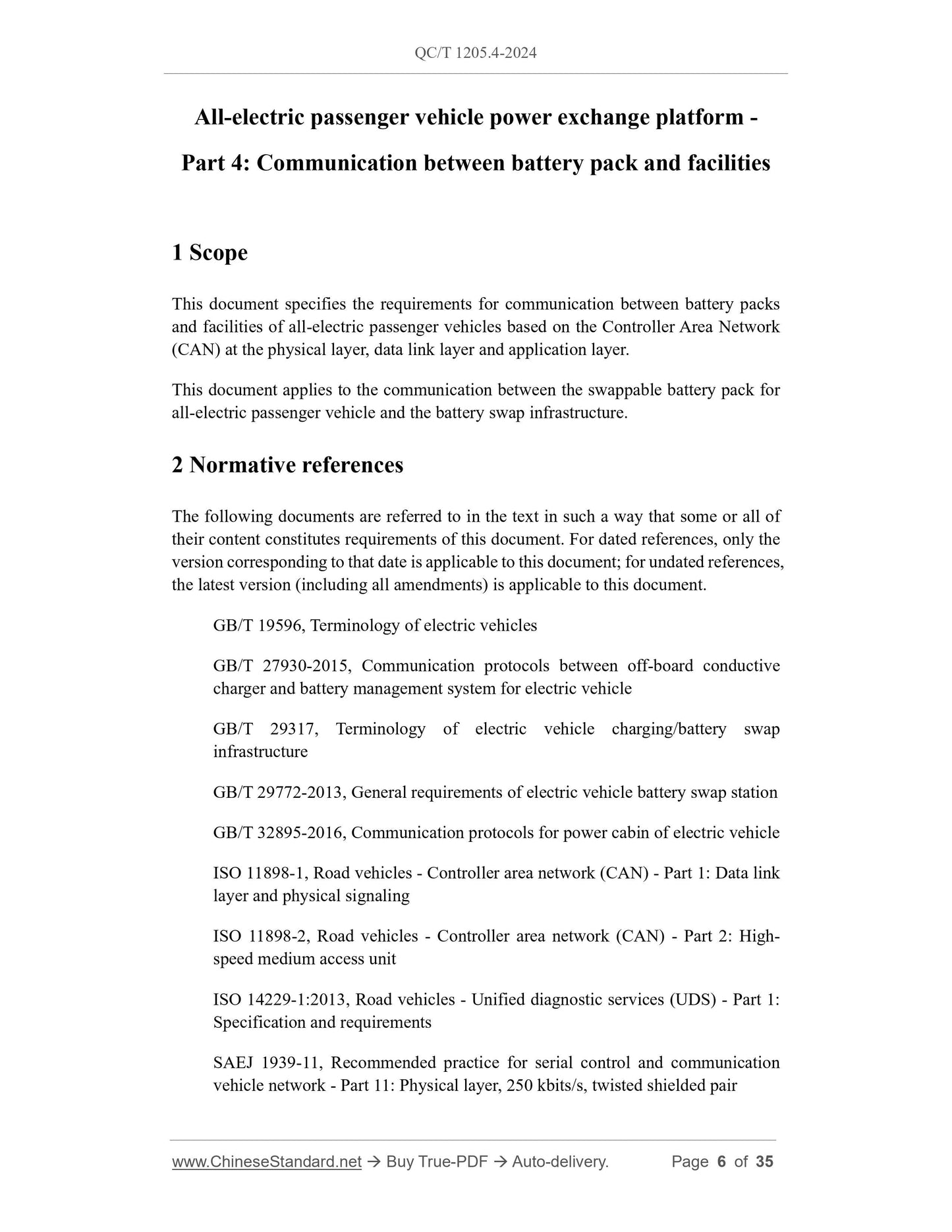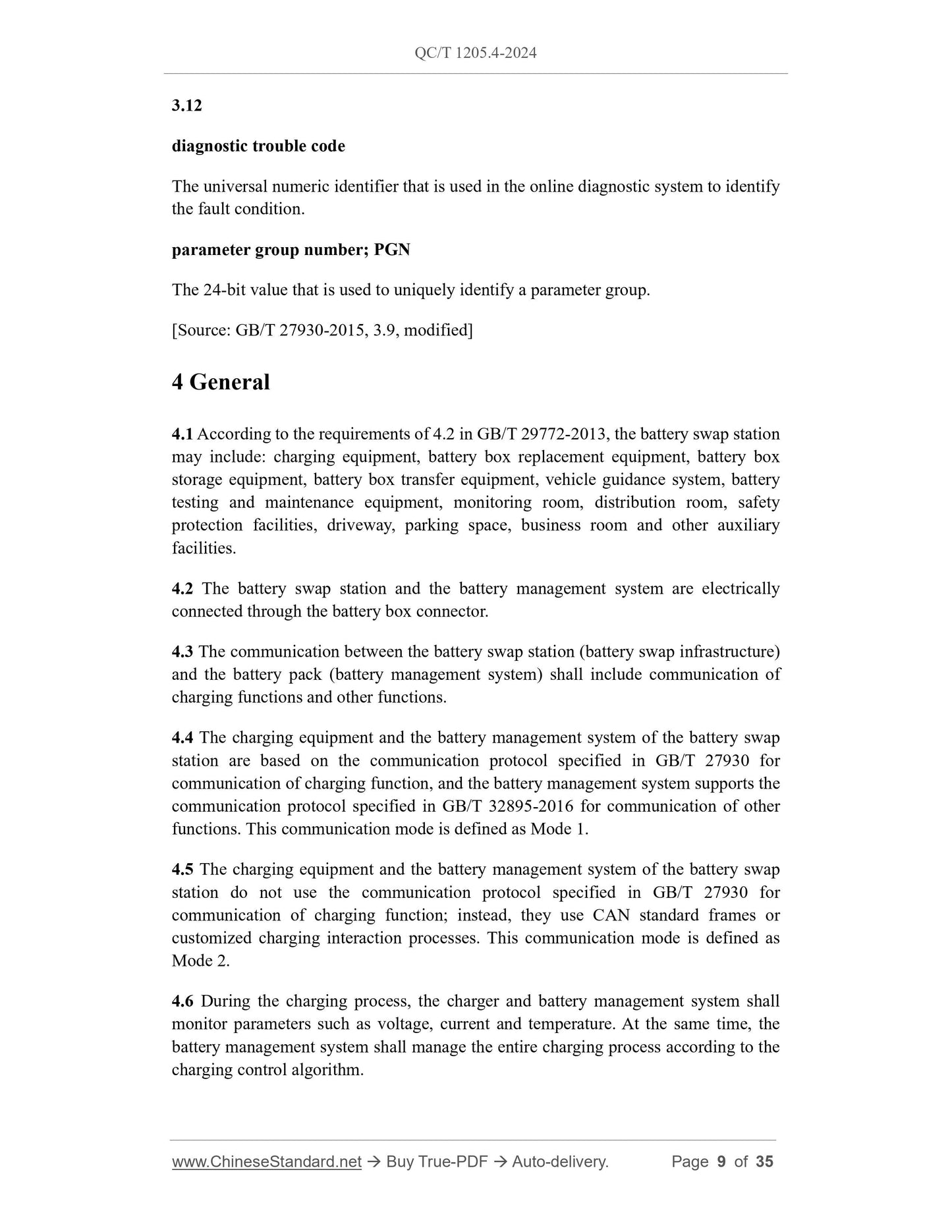1
/
of
5
www.ChineseStandard.us -- Field Test Asia Pte. Ltd.
QC/T 1205.4-2024 English PDF (QC/T1205.4-2024)
QC/T 1205.4-2024 English PDF (QC/T1205.4-2024)
Regular price
$335.00
Regular price
Sale price
$335.00
Unit price
/
per
Shipping calculated at checkout.
Couldn't load pickup availability
QC/T 1205.4-2024: All-electric passenger vehicle power exchange platform - Part 4: Communication between battery pack and facilities
Delivery: 9 seconds. Download (and Email) true-PDF + Invoice.Get Quotation: Click QC/T 1205.4-2024 (Self-service in 1-minute)
Newer / historical versions: QC/T 1205.4-2024
Preview True-PDF
Scope
This document specifies the requirements for communication between battery packsand facilities of all-electric passenger vehicles based on the Controller Area Network
(CAN) at the physical layer, data link layer and application layer.
This document applies to the communication between the swappable battery pack for
all-electric passenger vehicle and the battery swap infrastructure.
Basic Data
| Standard ID | QC/T 1205.4-2024 (QC/T1205.4-2024) |
| Description (Translated English) | All-electric passenger vehicle power exchange platform - Part 4: Communication between battery pack and facilities |
| Sector / Industry | Automobile and Vehicle Industry Standard (Recommended) |
| Classification of Chinese Standard | T36 |
| Classification of International Standard | 43.04 |
| Word Count Estimation | 30,340 |
| Date of Issue | 7/19/2024 |
| Date of Implementation | 1/1/2025 |
| Issuing agency(ies) | Ministry of Industry and Information Technology |
Share









